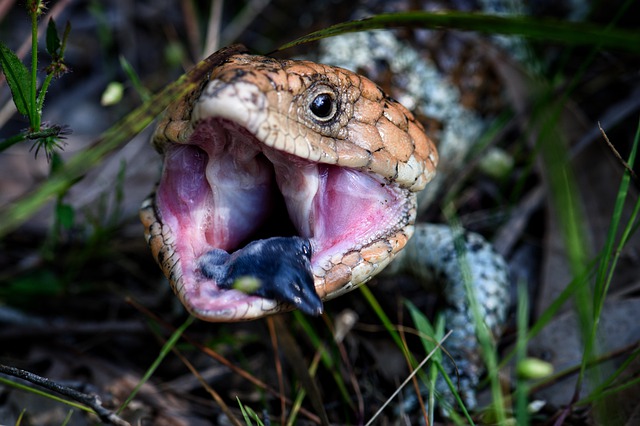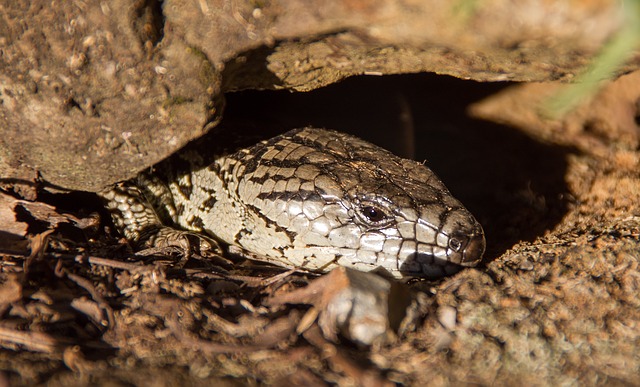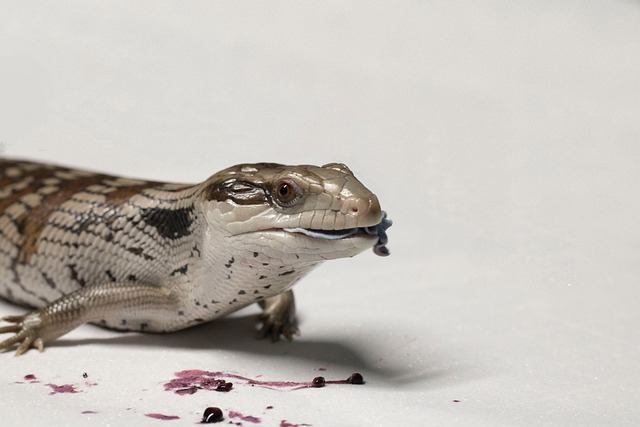Keeping Pink & Blue-Tongue Lizards

Blue-tongue Lizards are the largest members of the skink family (Scincidae). Pink-tongues grow to a relatively close size as their relatives. These lizards are native to Australia and are very rewarding pets for the nature-lover, they can be tamed for handling and are very interesting to learn about.

Pink and Blue-Tongue Lizard Facts:
- Pink and Blue-Tongue Lizards can live for 10 – 15 years.
- They require heating and ultraviolet lighting.
- A varied diet is recommended.
- Both species are native to the east coast of Australia, with Pink-Tongued Skinks inhabiting warmer regions than their Blue-Tongued cousins.
- Pink-Tongued Skinks can grow up to 40cm, with Blue-Tongues growing up to around 60cm.
Adopting a Pet Skink
Species you can find at Pet City are Eastern Blue-Tounged Skink and Pink-Tounged Skink. You might find one for sale in-store, however it's best to call ahead and speak with one of our friendly staff for more information!
Enclosures:
What size enclosure do skinks need?
On average, Blue-Tongued Skinks grow faster than Pink-Tongues so they will require a larger enclosure sooner. You can start off with a 3’ or 4’ (90 – 120cm) enclosure; this should last for the animal’s life but of course, the more space you can give them the better off they are.
Do skinks climb?
Skinks do not need as much climbing room as dragons although they will enjoy having rocks and lower branches on the ground to provide cover and stimulation. It is important to provide areas for your skink to hide in, 2 or 3 usually suffice.

Heating and Lighting:
Do Skinks Need Heat?
Pink & blue-tongue Lizards are cold-blooded and greatly affected by air temperature. This is why you will regularly find them basking in the sun in the wild. A basking spot between 30 – 32°C is necessary for these skinks. If you notice that your animal is not eating much, try increasing the basking spot temperature to 33 – 34°C.
Do Skinks Need UV Lighting?
Ultraviolet lighting is essential for a healthy animal. A 5% UV bulb is recommended, as long as the skink can get within 6” (15 – 20cm) of the bulb itself.
Heat Lamps Heat Lamp Holders Temperature Control & Monitoring Heat Mats
Handling:
Can you tame a skink?
Skinks can become tame with time; the best way to tame your new best friend is to slowly introduce them to handling. Start by holding them for a couple of minutes every few days; the best way is to gently slide your hand underneath them and then pick them up.
How do you pick up a skink?
Do not approach your skink from above and do not pick them up by the tail: this is what predators in the wild do and it will cause stress for your skink. It is best to talk to you skink and approach from the front, so you do not alarm them.

Feeding
What do Blue-Tongue Lizards eat?
Blue-Tongued lizards are omnivores and will eat just about everything. Young animals should be fed higher amounts of protein and as their growth slows you can begin to feed them more fruit and vegetables.
Some highly beneficial food varieties include:
Bok Choi, Squash, Tomato, Carrot, Dandelion flowers, Clover flowers, Apple, Beans, Broccoli, Sweet Potato, Peas, Corn, Celery, Strawberries, Blueberries, Cooked egg, Meal worms, Pinkie mice, Crickets, Woodies, Earthworms and Snails are all acceptable food items. Things like Mealworms and Pinkie Mice should be fed as a treat, once every couple of weeks or so.
What do Pink-Tongue Lizards eat?
Pink-Tongued Lizards are generally more finicky eaters than Blue-Tongues. Try to get them to eat a wide variety of food items from the list above as much as possible, with a particular emphasis on slugs and snails (they will probably eat these more so than anything else). However, you should be careful feeding slugs and snails from your garden in case of any pesticide or snail pellet remnants which can harm or kill skinks. pink-tongues will rarely eat crickets and woodies.
Supplement live food items with calcium powder as this will help to guard against metabolic bone disease. Products such as CalStron are particularly good. Ask the friendly Reptile Team for more information regarding this.
Breeding:
The blue-tongue and pink-tongue species of skinks are livebearers: they do not lay eggs but instead give birth to live young. This is rare because lizards will usually lay eggs. Blue-Tongued Lizards average litters of up to 12 young, whereas Pink-Tongued Lizards average up to 15.
Sexing skinks can be difficult, however NOT SEXING skinks can be very frustrating. blue-tongues are territorial and it is not recommended to keep males together to avoid them fighting during the mating season. It is also a good idea to avoid keeping different sized skinks together.








